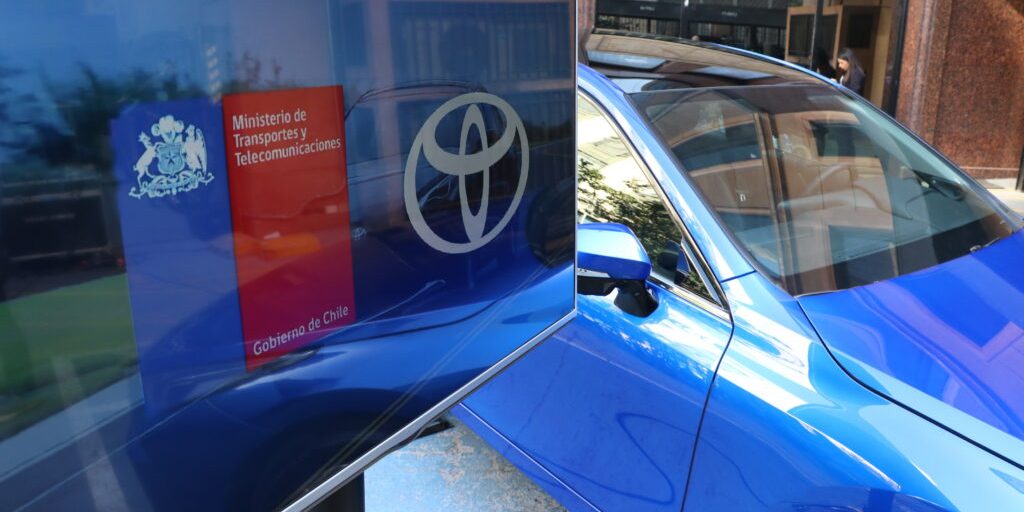The Chilean government authorized the circulation of the first hydrogen-powered vehicle. It is a Toyota Mirai model, which a few days ago obtained its official approval certificate from the Ministry of Transport and Telecommunications (MTT). This milestone puts Chile at the Latin American vanguard, by making official the use of this car, which will have a pilot character, and whose objective is to promote the infrastructure and synergies necessary for the introduction of this new technology in the country.
The Ministers of Transport Juan Carlos Muñoz, of Energy Diego Pardow, and of the General Secretary of Government, Camila Vallejo, as well as representatives of Toyota in Chile participated in the delivery of the vehicle’s approval certificate.
“This demonstrates our Government’s commitment to promoting clean energy. Five years ago we entered the first electric buses and today there are more than 800 that circulate through our capital. We have a commitment to move towards carbon neutrality and this is one more step to gradually introduce new technologies that allow us to achieve that goal,” said Minister Muñoz.
Minister Vallejo also commented: “There is a commitment that is real, honest and that is demonstrated with concrete actions on the part of the Government to not only promote and articulate at the national level the determined fight against the climate crisis, but rather that we want to continue to be at the forefront of the actions that allow us to reach carbon neutrality in 2050, which is a commitment that we assume.”
“Technological changes are first impossible, then unpayable, and then they are a reality. So, the fact of showing that things are possible is a first step, then comes the challenge of making it accessible to everyone and that is what we are working on as a Government,” added the Minister of Energy.
The Toyota Mirai is a car that has an initial autonomy of 400 km, which doubles (on average) that of a conventional electric vehicle. It should be noted that this model allows a range of almost 700 kilometers (equivalent to a trip between the Metropolitan Region and Atacama), but in view of the pilot character for the Chilean market, it was conditioned for a slightly lower operation, subject to expansion.
In terms of technology, when operating with a hydrogen fuel cell system, its charge is not carried out with a traditional electrical connection, but requires a chemical reaction between the hydrogen stored in the tank and the oxygen in the air.
For this, the car has three high-pressure hydrogen tanks, placed in the shape of a “T”: a long one that runs longitudinally of the vehicle and two smaller ones located under the rear seats and the trunk. The advantage of this is that, in approximately 5 minutes, it allows refueling 142 liters of hydrogen (or 5.6 kilograms at 700 bars), in its conventional version.
Source: Ministry of the General Secretariat of the Government of Chile







